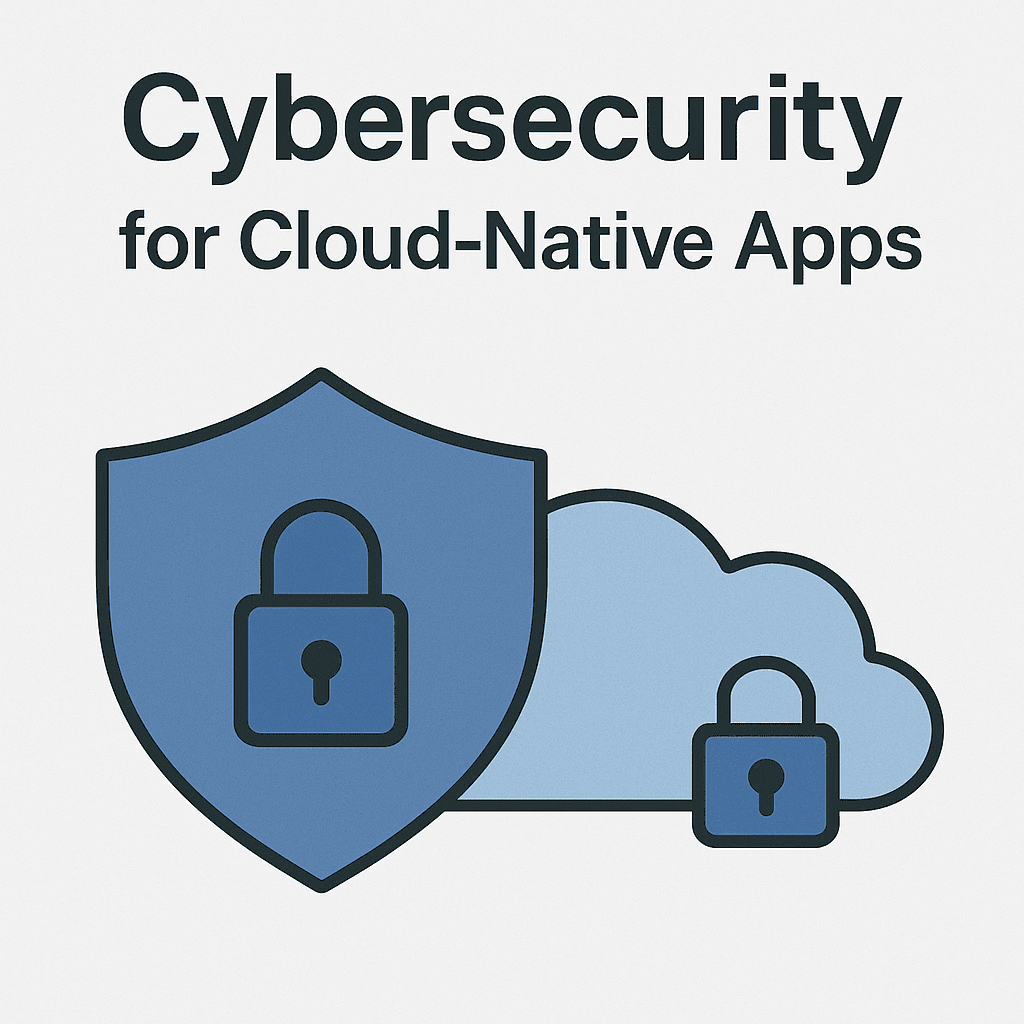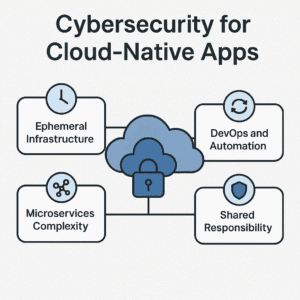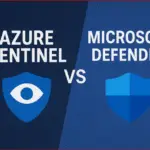
At present businesses are increasingly using cloud native applications to improve agility, scalability, and innovation. With this shift, making sure cloud-native apps are secure is more important than ever. This article will cover everything you need to know about cybersecurity for cloud and native application security, including specific risks and challenges, best practices, and the latest tools.
Table of Contents
ToggleWhat Are Cloud-Native Applications?
Cloud-native applications are made to run in flexible, scalable cloud environments. Unlike traditional monolithic applications, cloud-native apps use microservices, containers, and often depend on orchestration platforms like Kubernetes. These apps are naturally flexible, scalable, and resilient, which allows for quick development and deployment.
Key Features of Cloud-Native Apps:
- Microservices architecture
- Containerization (e.g., Docker)
- Dynamic orchestration (e.g., Kubernetes)
- Continuous Integration/Continuous Deployment (CI/CD)
- Automated scaling and management
However, these architectural improvements bring new security challenges and potential weaknesses.
Why Cybersecurity for Cloud-Native Apps Is Different

Traditional security models often fall short in cloud-native environments. Here’s why:
Ephemeral Infrastructure: Resources can show up and disappear in seconds. This makes traditional perimeter-based security useless.
Microservices Complexity: Hundreds or thousands of loosely connected services communicate across networks, which increases the attack surface.
DevOps and Automation: Fast CI/CD pipelines can create vulnerabilities if security isn’t part of the process.
Shared Responsibility: In cloud-native setups, security is a shared duty between cloud providers and customers, which can lead to gaps.
These factors call for a security approach that is automated, integrated, and continuous.
Common Threats to Cloud-Native Applications
Understanding the threat landscape is crucial. Here are some of the most common cloud-native security threats:
1. Container Vulnerabilities: Containers often have outdated libraries or misconfigured settings, which expose applications to attacks. Attackers can also escape from containers and access the host.
2. Insecure APIs: APIs are the backbone of microservices. Poorly secured APIs can be exploited to gain unauthorized access or steal data.
3. Misconfigurations: Cloud misconfigurations, such as open storage buckets or overly permissive IAM roles, are among the leading causes of breaches in cloud environments.
4. Supply Chain Attacks: Modern apps rely on third-party packages and images. A compromised dependency can introduce malware into your pipeline.
5. Unprotected Secrets: Leaking API keys, passwords, or certificates in code repositories can give attackers the keys to your kingdom.
Best Practices for Securing Cloud-Native Applications
To address these threats, organizations must follow cloud-native security best practices. Here are actionable steps:
1. Shift Security Left (DevSecOps) – Integrate security into every phase of your CI/CD pipeline. Automated code analysis, vulnerability scanning, and compliance checks should be part of your development process.
2. Secure Container Images – Use trusted base images from official repositories. Scan images for vulnerabilities before deployment. Regularly update and patch containers.
3. Protect Secrets and Sensitive Data – Use secret management tools like HashiCorp Vault or AWS Secrets Manager. Never hard-code secrets in your code or configuration files. Rotate secrets regularly.
4. Apply Network Segmentation – Use Kubernetes network policies to isolate microservices. Restrict traffic between services to only what’s necessary. Employ service mesh solutions for secure service-to-service communication.
5. Implement Least Privilege Access – Use Role-Based Access Control (RBAC) across your cloud and orchestration platforms. Audit and review permissions regularly. Grant only the minimum necessary permissions to users, services, and APIs.
6. Monitor and Log Everything – Enable logging for all cloud resources and microservices. Use centralized log management and SIEM tools for real-time analysis. Monitor for suspicious activity and unauthorized access.
7. Automate Compliance – Use Compliance-as-Code tools to enforce security policies. Regularly audit your environment against industry standards like CIS Benchmarks.
Tools and Solutions for Cloud-Native Security
There are some strong collection of cloud-native security tools to help automate and enforce security.
- Container Security: Aqua Security, Sysdig, Twistlock (Palo Alto Prisma Cloud)
- Cloud Security Posture Management: AWS Security Hub, Azure Security Center, Google Cloud Security Command Center
- Secret Management: HashiCorp Vault, AWS Secrets Manager, Azure Key Vault
- DevSecOps Automation: Snyk, Trivy, Checkov
- Service Mesh Security: Istio, Linkerd
Securing Kubernetes: The Heart of Cloud-Native Apps
Kubernetes is the main platform for managing modern cloud-native apps. Here are important tips for Kubernetes security:
- Always use the latest version of Kubernetes.
- Enable Role-Based Access Control (RBAC) and audit logs.
- Use Pod Security Policies or Pod Security Admission to enforce security standards.
- Isolate sensitive workloads with Kubernetes namespaces and network policies.
- Regularly scan clusters for vulnerabilities with tools like kube-bench and kube-hunter.
What is the Role of DevSecOps in Cloud-Native Security
DevSecOps is the practice of including security in DevOps workflows. In cloud-native environments, DevSecOps makes sure that security is always a priority, not an afterthought.
- Security testing is automated in CI/CD pipelines.
- Vulnerability management is proactive, not reactive.
- Collaboration among development, operations, and security teams is encouraged.
DevSecOps helps organizations create a strong, flexible security stance for their cloud-native applications.
Cloud-Native Security Trends in 2024-25
As the threat landscape changes, so do the tools and strategies. Key trends includes:
- Zero Trust Security: Never trust, always verify, regardless of location.
- Automated Threat Detection: AI-driven tools for real-time anomaly detection.
- Security-as-Code: Codifying security policies for consistency and automation.
- Improved Compliance Automation: Meeting regulatory demands through automated checks.
Also Explore – Best Tools for Ethical Hacking
Conclusion:
Cybersecurity for cloud-native apps is a changing challenge. By understanding the specific risks, using best practices, taking advantage of automation, and adopting a DevSecOps mindset, organizations can secure their cloud-native applications and protect sensitive data in the cloud.
Explorer more article in Cybersecurity


